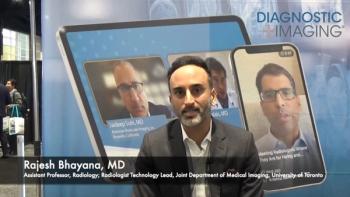
Query tool analyzes radiology report database
Using a new query tool, researchers at the University of Pennsylvania have found that the use of comparison studies by radiologists increases with the availability of PACS. The tool probed a database of radiology report text using structured query language (SQL).
Using a new query tool, researchers at the University of Pennsylvania have found that the use of comparison studies by radiologists increases with the availability of PACS. The tool probed a database of radiology report text using structured query language (SQL).
"Our results show that SQL investigations of text reports can achieve greater than 95% accuracy in determining the utilization of prior images," said Dr. Curtis P. Langlotz, an associate professor of radiology at Penn. "We found a trend toward increasing utilization of priors over time, possibly because the adoption of PACS in our practice has made prior exams more accessible."
Langlotz said this topic is important because the use of prior exams in routine clinical practice is thought to improve the quality of image interpretations, yet data to support this view are limited. Absent this information, radiologists don't know how much effort and expense to put into obtaining comparison images.
"We found at our institution comparison exams were mentioned in radiology reports an average of 39% of the time over the past eight years," Langlotz said.
The study also found significant variability in the mention of comparisons, ranging from 77% to 4%. The highest rates appeared in mammography, distantly followed by PET and computed radiology. Among the lowest rates were fluoroscopy studies.
The SQL tool searched for common phrases in free text reports that indicated whether comparison studies were used, not available, or not mentioned.
The queries were used on a database of 1.8 million reports. They found that comparisons were made to prior images in 38.69% of the reports, were unavailable in 18.79%, and were not mentioned in 42.52%.
Langlotz said the queries can be used by other institutions to determine the impact of PACS on their utilization of priors and can be modified to mine other data.
"It is also possible they can be applied toward developing a research PACS, a search engine specifically geared for querying radiology reports that could provide relatively accurate answers to research questions," he said.
Newsletter
Stay at the forefront of radiology with the Diagnostic Imaging newsletter, delivering the latest news, clinical insights, and imaging advancements for today’s radiologists.




























